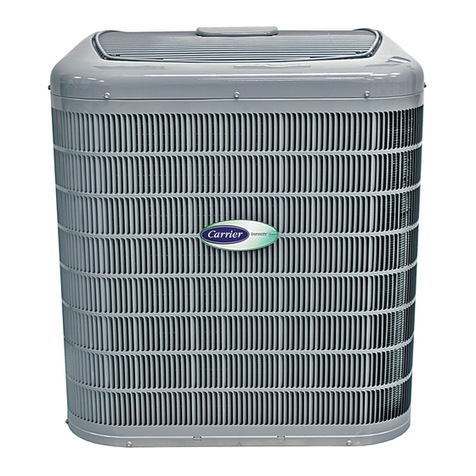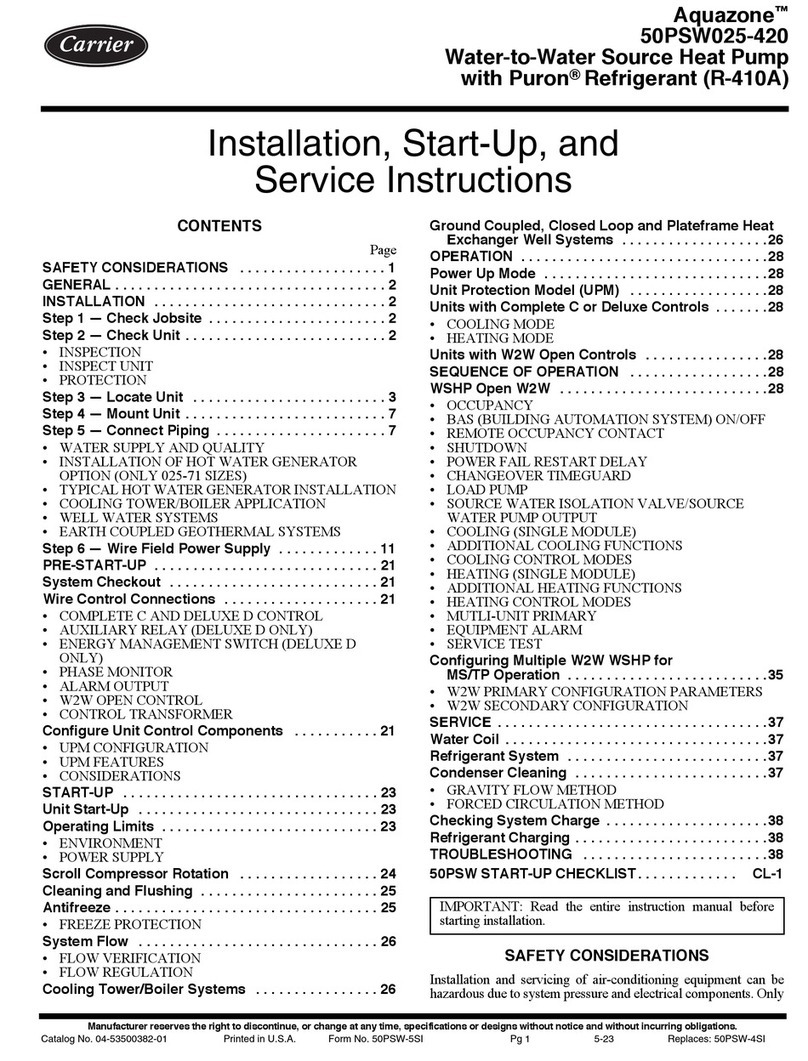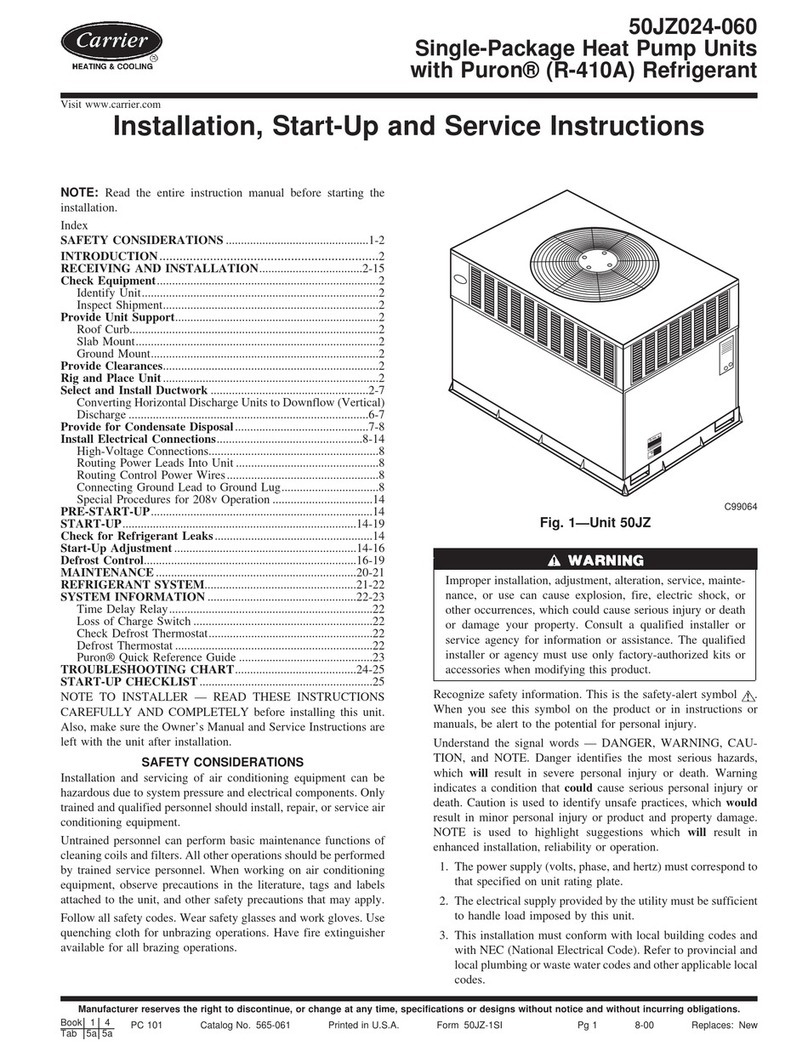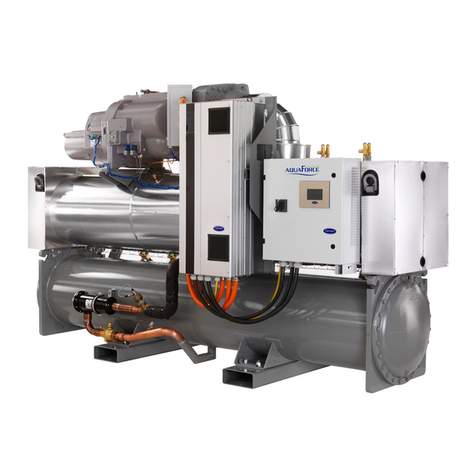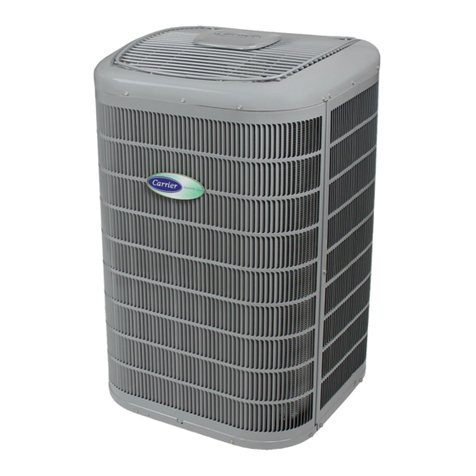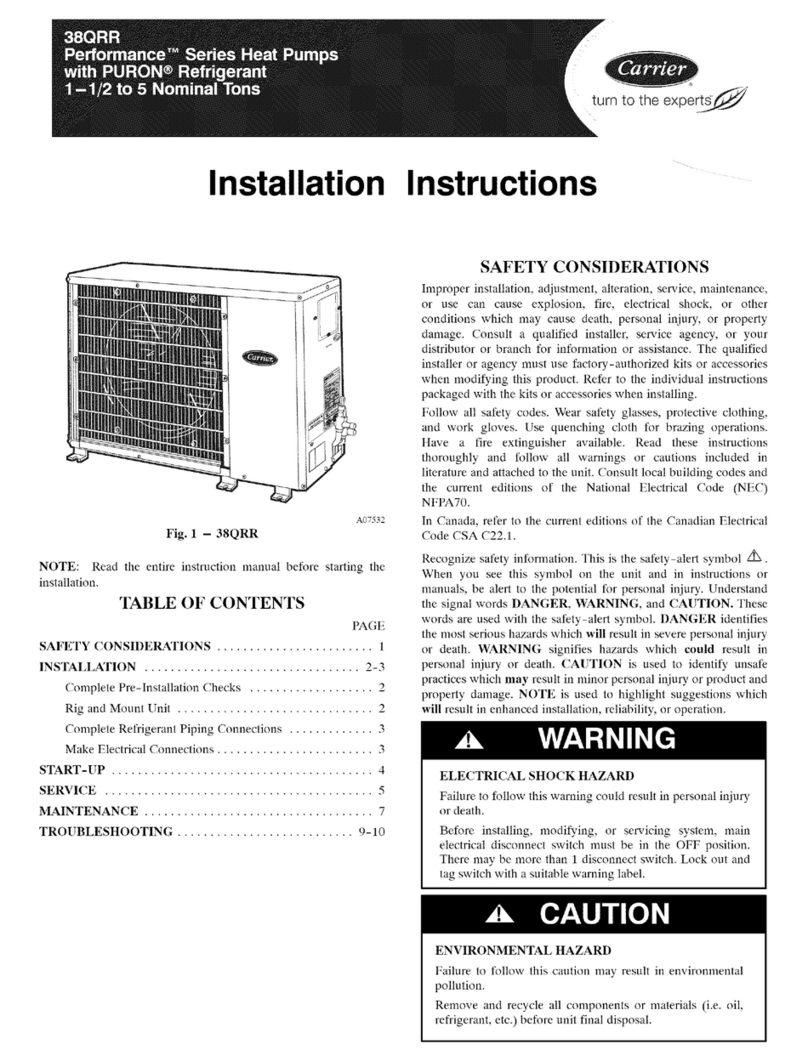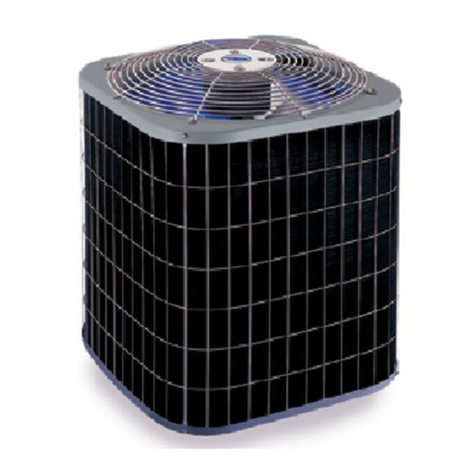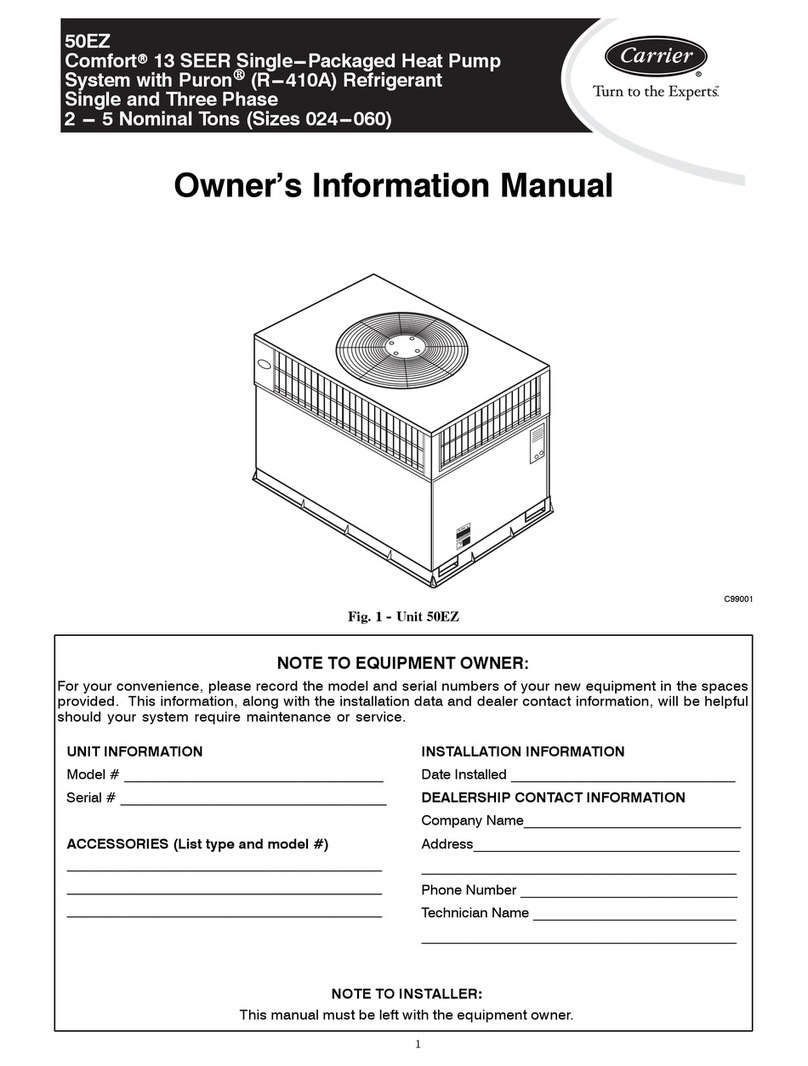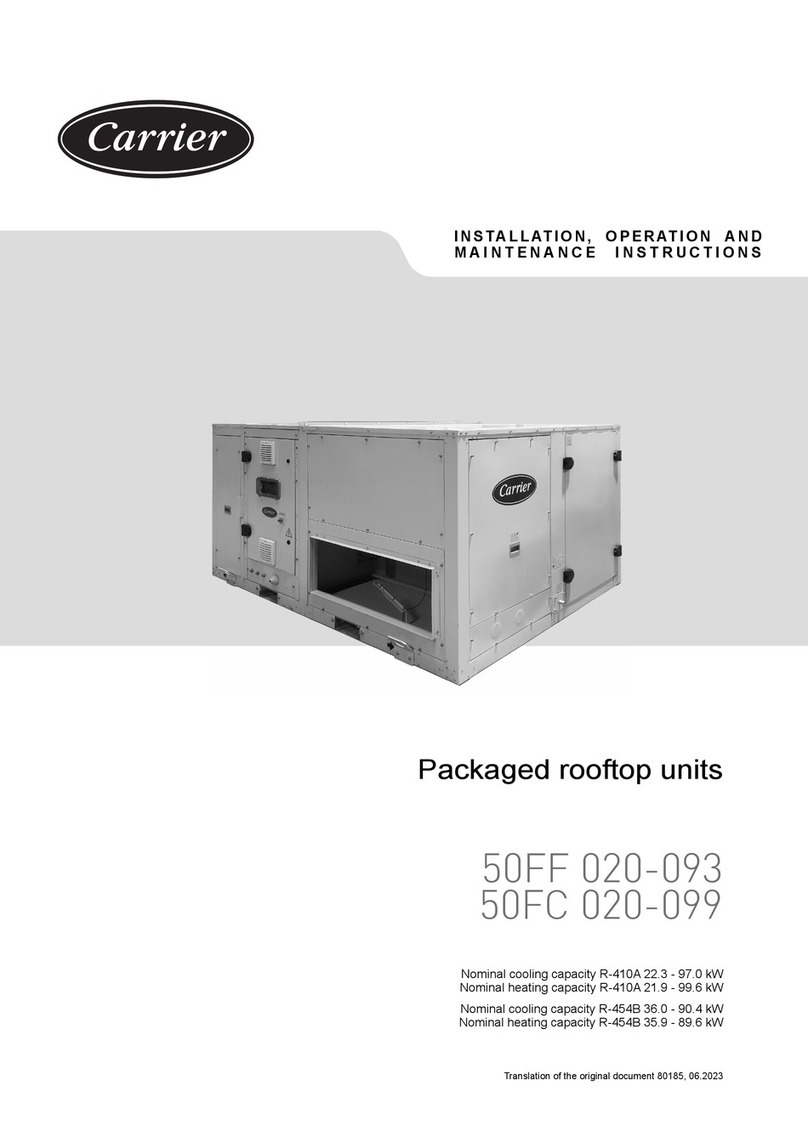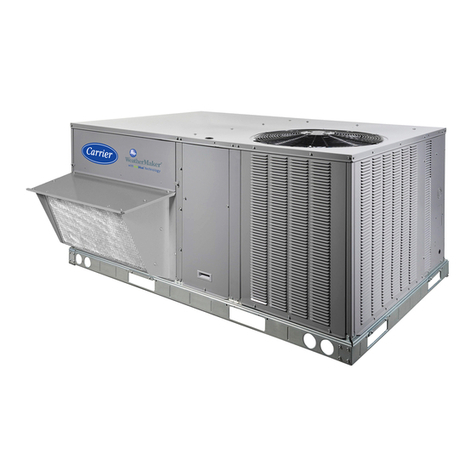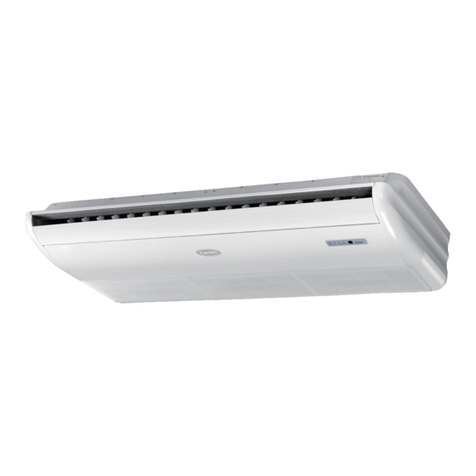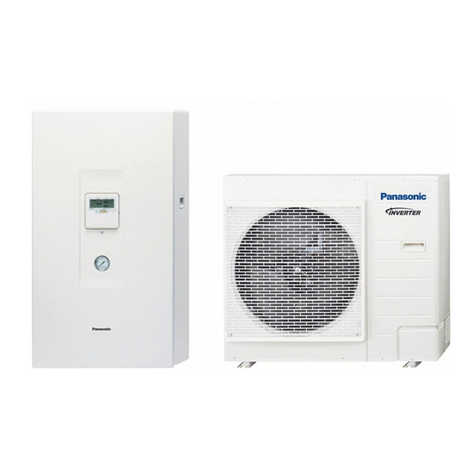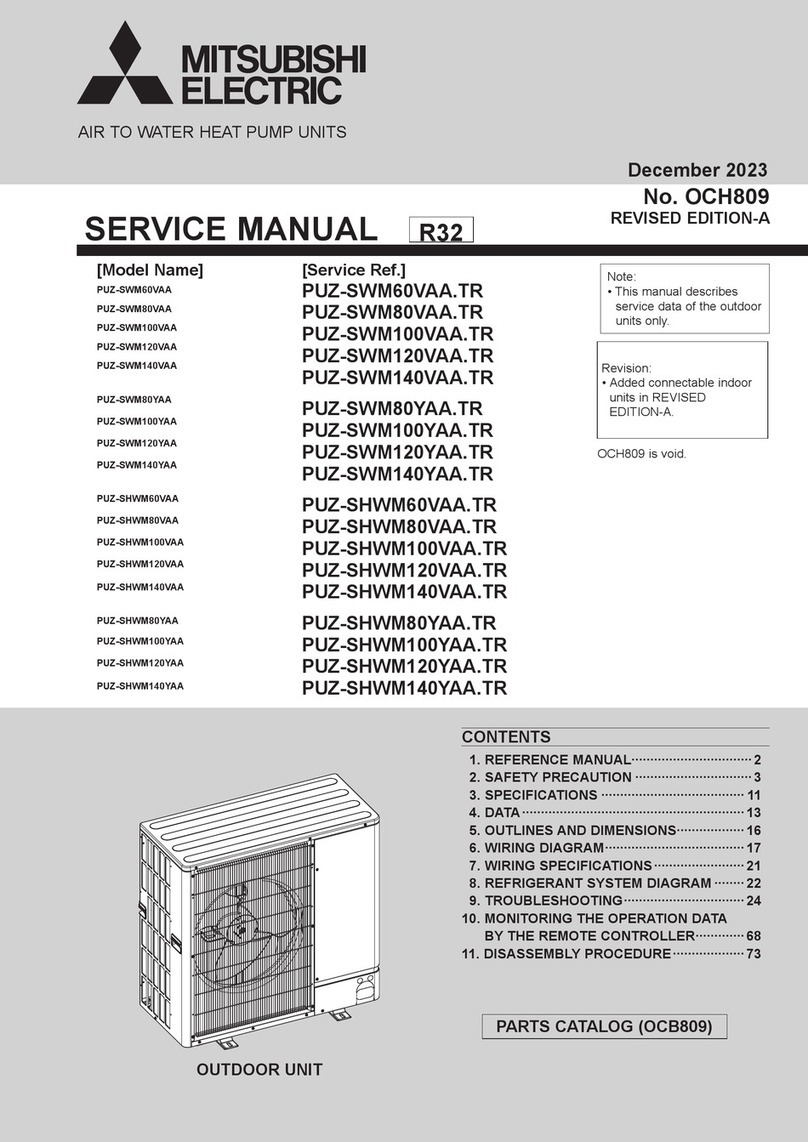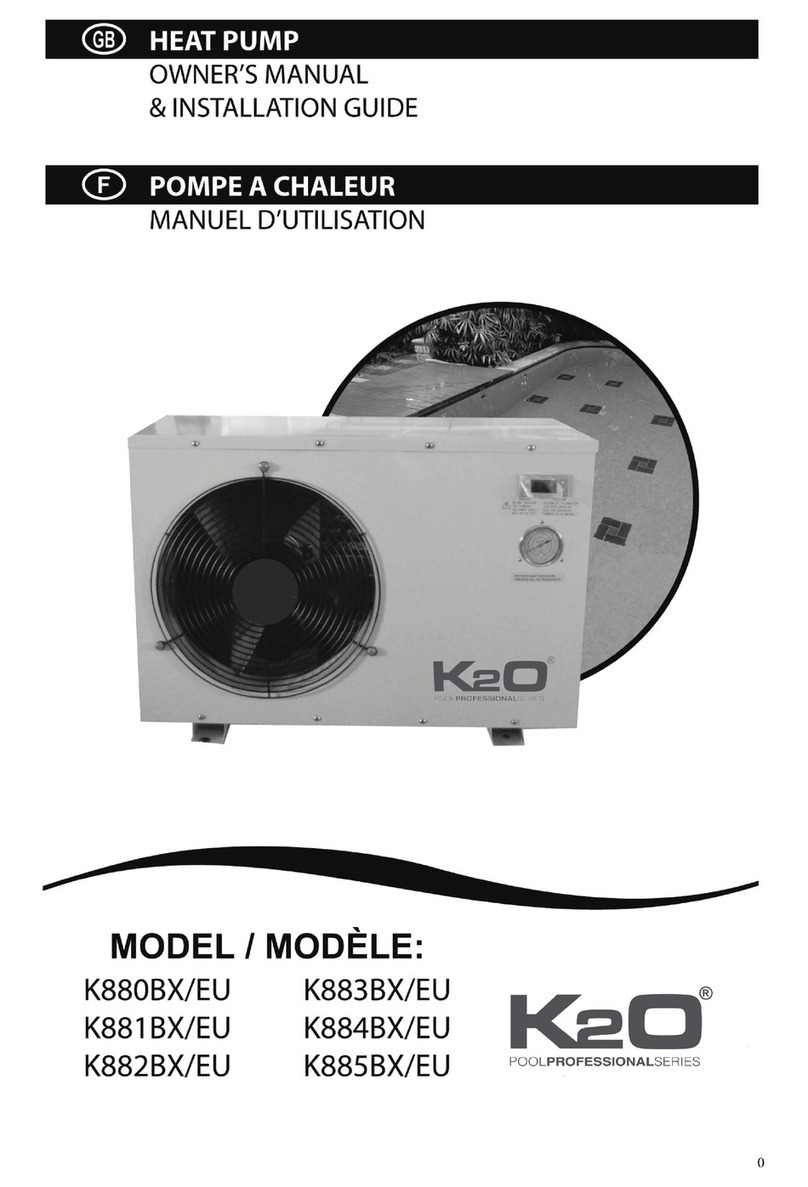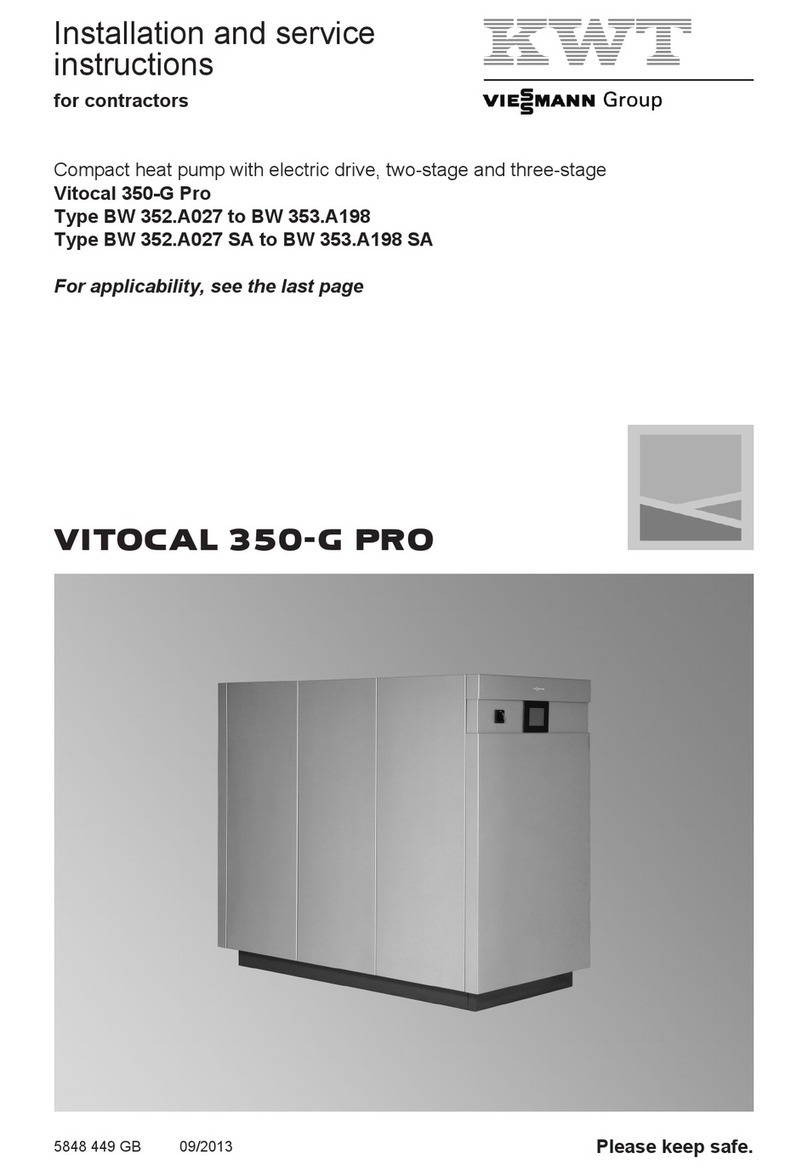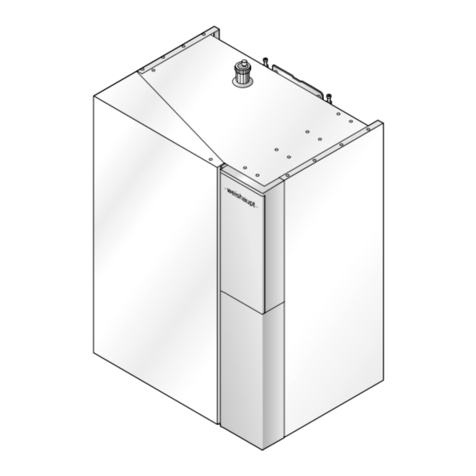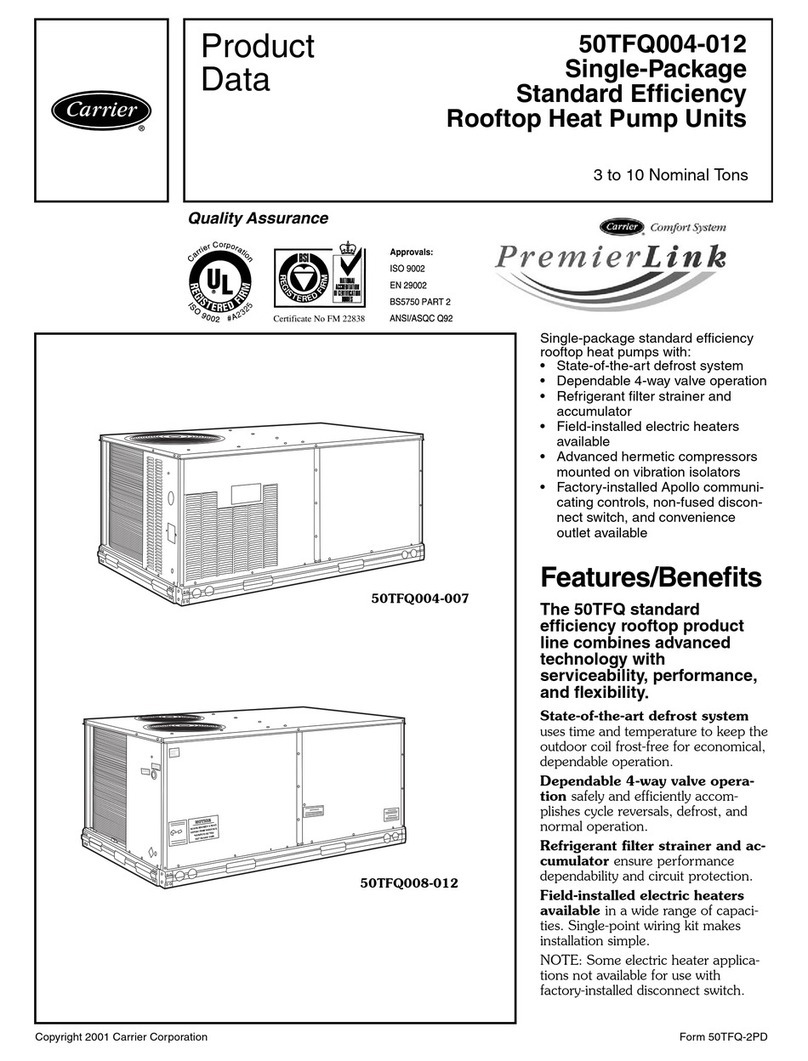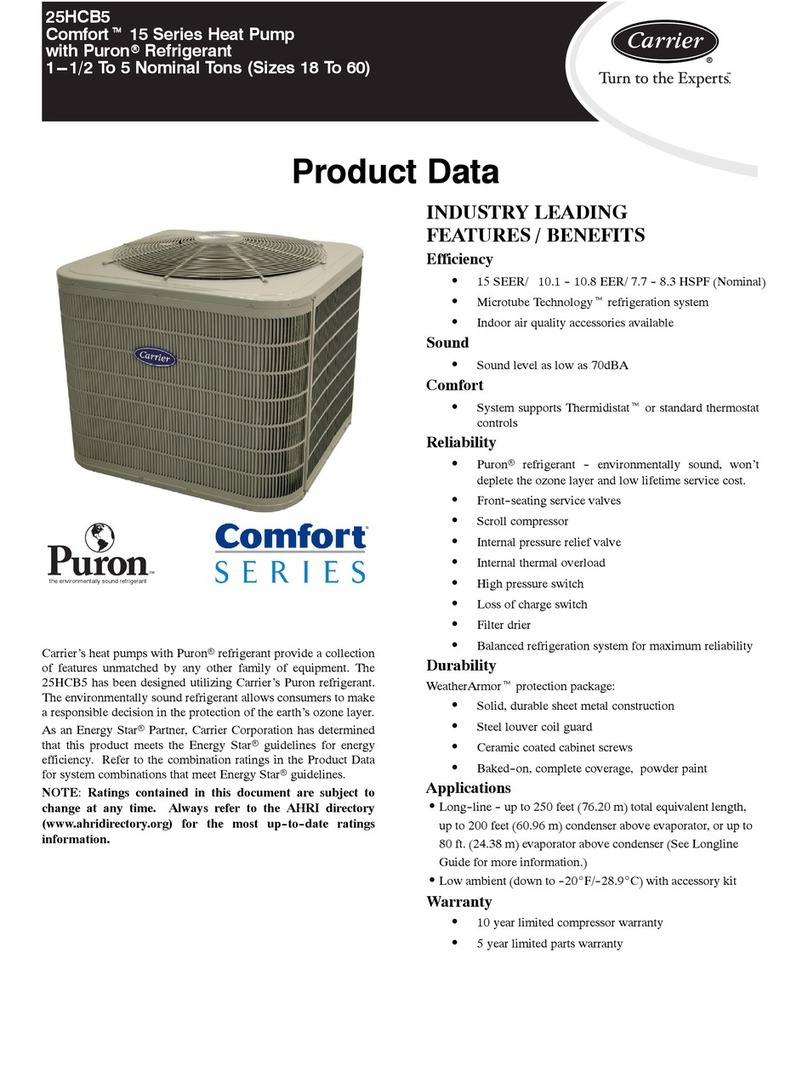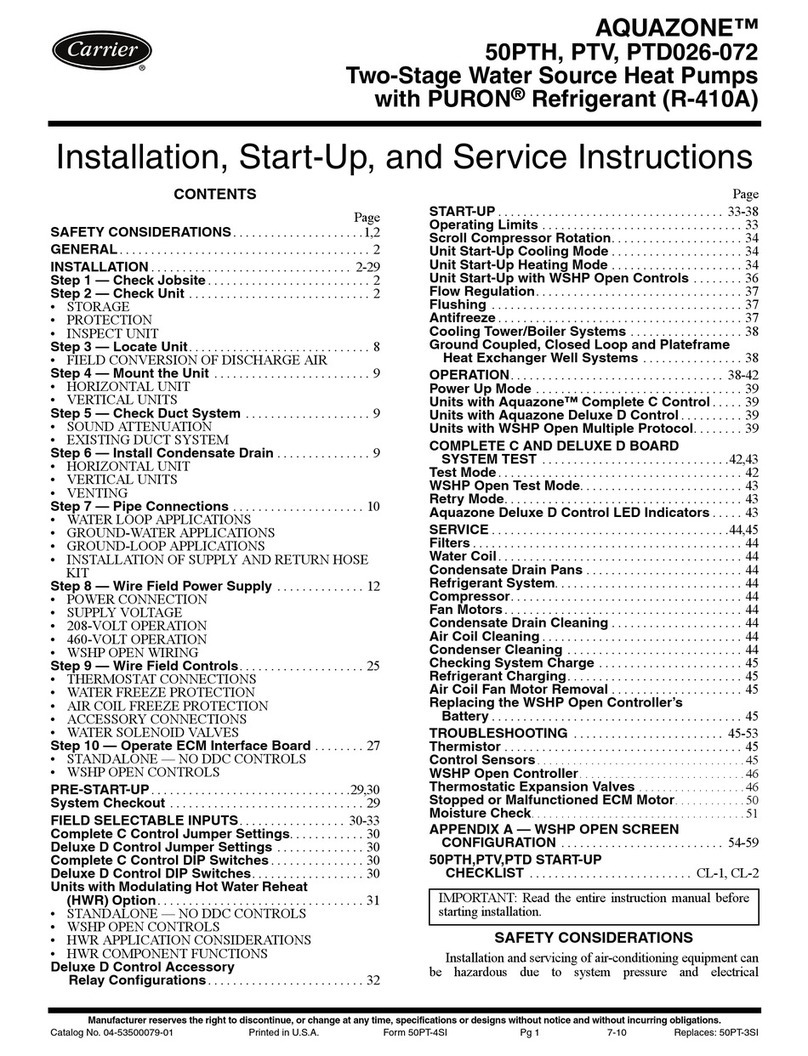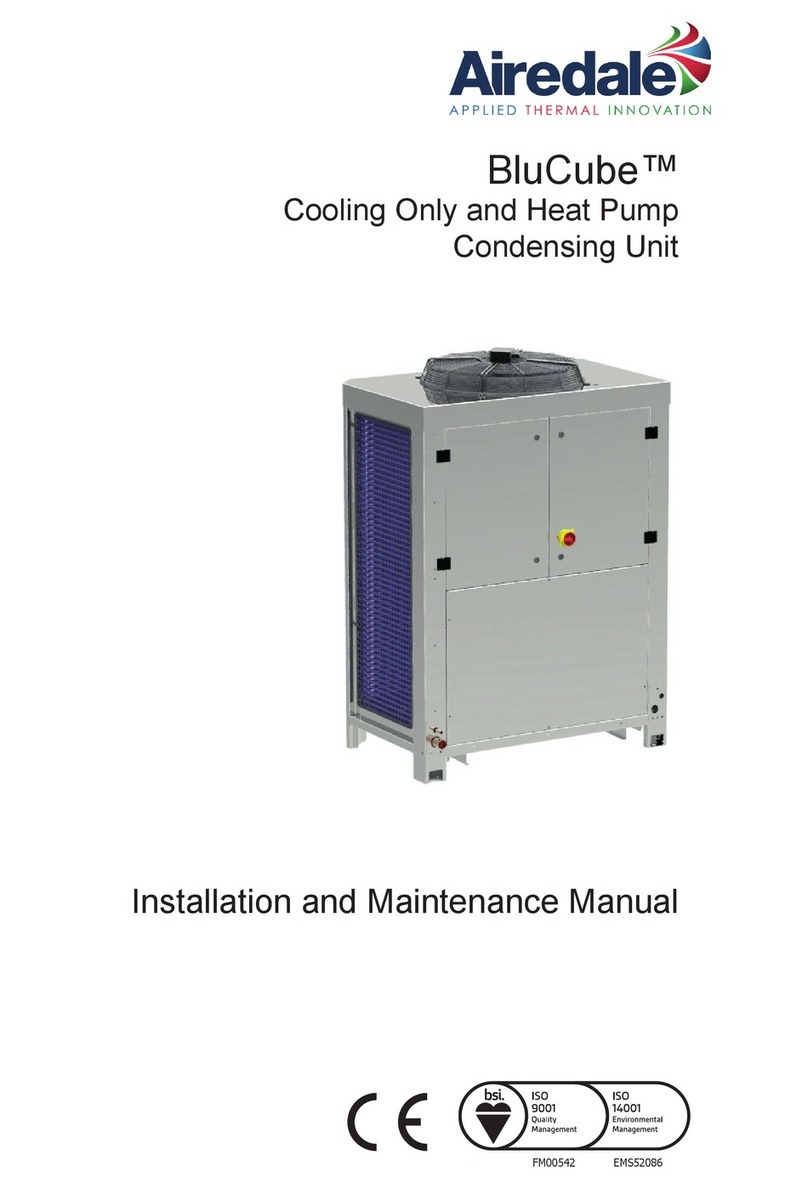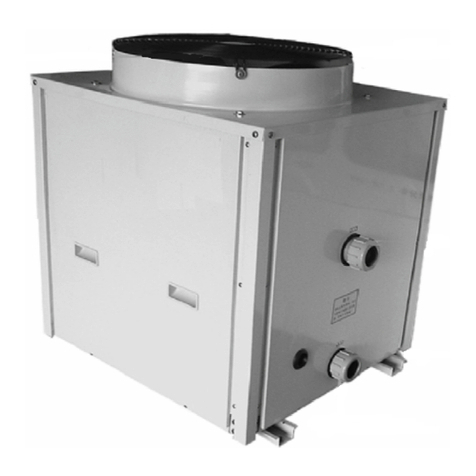
7
INSTALLATION GUIDELINES (ALL UNITS)
1. Be sure that the location chosen for unit installation provides
ambient temperatures maintained above freezing.
2. Be sure the installation location is isolated from sleeping
areas, private offices and other acoustically sensitive spaces.
3. Be sure unit is mounted at a height sufficient to provide an
adequate slope of the condensate lines. If an appropriate slope
cannot be achieved, a field-supplied condensate pump may
be required.
4. On horizontal units, allow adequate room below the unit for
condensate drain trap and do not locate the unit above supply
piping.
5. Provide sufficient space for duct connection. Do not allow the
weight of the ductwork to rest on the unit.
6. Provide adequate clearance for filter replacement and drain
pan cleaning. Do not allow piping, conduit, etc. to block filter
access.
7. Provide sufficient access to allow maintenance and servic-
ing of the blower and blower motor, compressor, refrigerant
circuit, controls, and coils.
8. For units with free return (non-ducted), provide adequate
space for proper return airflow. For units installed in closets
or mechanical rooms, provide sufficient return grill area for
proper airflow.
9. Provide ready access to water valves and fittings, and screw-
driver access to unit side panels, discharge collar, and all elec-
trical connections.
10. Where access to side panels is limited, pre-removal of the
control box side mounting screws may be necessary for
future servicing.
11. For units that are installed in enclosed spaces (such as furred
in closets or behind finished ceilings), provide access panels
to allow for the installation, maintenance, service, and
removal of the unit.
Step 2 — Check Unit
Upon receipt of equipment at the jobsite, inspect the carton or
crating of each unit, and inspect each unit for damage on both the
interior and exterior. Note any damage and contact your local
equipment sales office.
INSPECT UNIT
To prepare the unit for installation, complete the procedures listed
below:
1. Verify that the correct unit has been received. Check the unit
capacity (tonnage), voltage, orientation, and configuration.
2. Compare the electrical data on the unit nameplate with to ver-
ify the jobsite power feed (voltage, amperage, MCA) and
power protection (MOCP).
3. Verify that the unit is the correct model for the entering water
temperature of the job (standard or extended range)
4. Remove the unit packaging, keeping the unit attached to the
shipping pallet. Do not destroy packaging. Save for re-instal-
lation on the unit if the unit will not be fully installed.
5. Open a unit access panel. Verify that the refrigerant tubing is
free of kinks or dents, and that it does not touch other unit
components.
6. Check the water piping and piping connections to make sure
they are free from defects, kinks, dents, and appear to be
water tight. Verify system operating water pressure.
7. Inspect the blower assembly. Verify that the blower has not
come lose during shipping. Verify clearance between the
blower wheel and the blower housing. Verify free blower
rotation.
8. Inspect all electrical connections. Be sure connections are
clean and tight at the terminals.
9. Check unit controls. If Complete C or Deluxe D, verify field
provided thermostat is available. If WSHP Open, verify
proper sensor has been provided and a commissioning inter-
face will be available.
10. 50PSH Only - Locate the hanging bracket kit located in
the compressor compartment.
11. Remove the foam blower shipping support from underneath
the blower section.
12. Remove any shipping brackets from the unit.
Step 3 — Locate Unit
Locate the unit in an indoor area that allows easy removal of the
filter and access panels, and has enough room for service person-
nel to perform maintenance or repair. Provide sufficient room to
make fluid, electrical, and duct connection(s). If the unit is located
in a confined space such as a closet, provisions must be made for
return air to freely enter the space.
Unit condensate drains are not internally trapped. Allow room be-
low the unit base for horizontal models for an adequate conden-
sate trap.
These units are not approved for outdoor installation; therefore,
they must be installed inside the structure being conditioned. Do
not locate units in areas that are subject to freezing. Units must be
installed in conditioned space that is not subject to extremes of
temperature or humidity to avoid cabinet sweating and/or equip-
ment damage.
Do not use units for temporary heating, air conditioning or ventila-
tion during construction or remodeling, especially when plaster-
ing, sanding or painting or when replacing carpet or flooring. Dust
and debris can clog the coil and blower. Chemical vapors can lead
to formicary corrosion and damage the coil. Ensure adequate ven-
tilation and debris collection during construction or remodeling.
IMPORTANT: It is the installing contractor’s responsibility to
ensure that all equipment is installed with proper access for ser-
vice, start-up, installation of accessories, configuration of control
and other components, and equipment removal in accordance
with Carrier’s recommended service clearances and installation
instructions. Please refer to the Carrier Commercial WSHP War-
ranty Statement (document number 04-570008-01) for details on
warranty exclusions regarding equipment, access, removal and
clearances.
CAUTION
EQUIPMENT DAMAGE HAZARD
DO NOT store or install units in corrosive environments or in
locations subject to temperature or humidity extremes (e.g., at-
tics, garages, rooftops, etc.). Corrosive conditions and high
temperature or humidity can significantly reduce performance,
reliability, and service life. Always move units in an upright
position. Tilting units on their sides may cause equipment
damage.
IMPORTANT: Care must be taken to prevent the introduction of
dust, pain, debris, or chemicals into the unit, which can cause
damage to the unit, delay start-up, and may impact unit
longevity.
